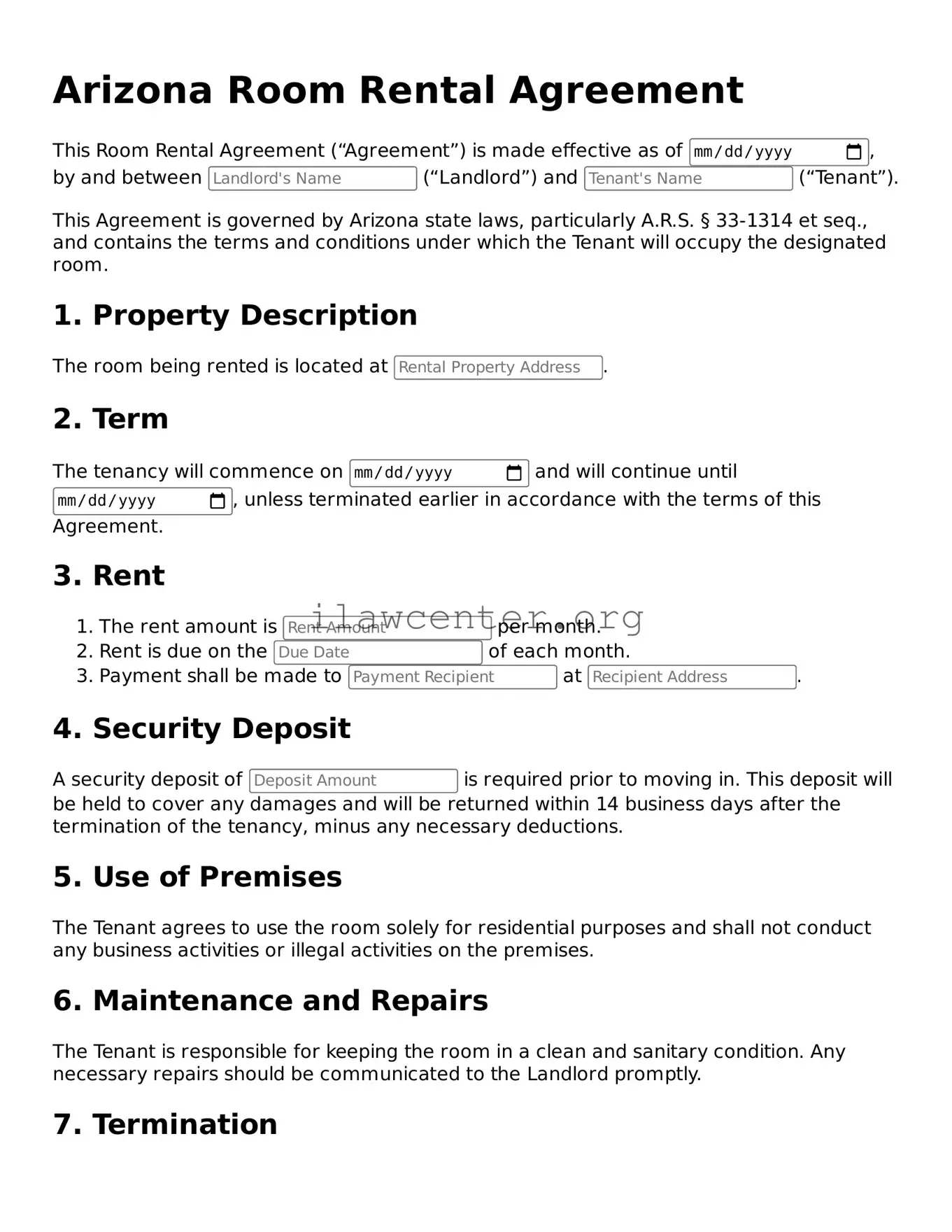Instructions on Utilizing Arizona Room Rental Agreement
Filling out the Arizona Room Rental Agreement form is an important step in formalizing the rental process. It ensures that both parties—the landlord and the tenant—understand their rights, responsibilities, and the terms of the lease. Below are the detailed steps you will need to follow to complete the form accurately.
- Obtain the Form: First, acquire a copy of the Arizona Room Rental Agreement form. This can typically be downloaded from a trusted legal website or can be obtained from a local housing authority.
- Enter the Date: On the top of the form, write the current date. This is important as it marks the beginning of the agreement.
- Provide Landlord Information: Fill in the landlord's full name, address, and contact information. This should be clear and easy to read.
- Enter Tenant Information: Next, provide the full name and contact information of the tenant(s). Ensure that all names are spelled correctly.
- Describe the Rental Property: Clearly describe the property being rented. Include the address and any specific unit numbers if applicable.
- Specify Rental Terms: Indicate the rental amount, due date, and any additional fees. Be sure to outline the payment method as well.
- Lease Duration: Fill out the start and end dates of the lease. If it is a month-to-month lease, indicate that as well.
- List Utilities and Amenities: Identify which utilities are included in the rent. This may include water, gas, electricity, or internet services.
- Signatures: Ensure that both the landlord and the tenant sign and date the form at the bottom. It is important for both parties to sign to make the agreement official.
- Keep Copies: Finally, make a copy of the completed form for both parties' records. This helps in keeping track of the terms agreed upon.
Once you've filled out the form according to the instructions, you're well on your way to establishing a clear and effective rental relationship. Remember, if any part of the form is unclear, seek assistance to ensure everything is accurately represented.
